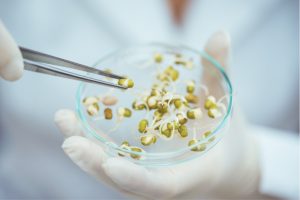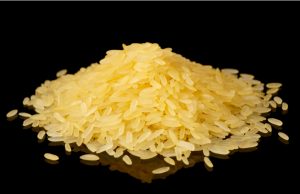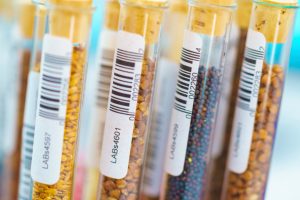When the first transgenic crops were introduced in the 1990s, they were heralded as the dawn of a new era in food production; the most optimistic predicted a solution to hunger and malnutrition. But we have witnessed a paradox with genetically modified organisms (GMOs) in agriculture: despite their benefits and the lack of evidence of potential harm, social opposition has prevented their large-scale adoption. And although they are now widespread around the world, their future is uncertain.
Since ancient times, humans have cross-bred plant varieties and selected those with the most desirable traits. This domestication led to the Neolithic Revolution, which 10,000-12,000 years ago began to replace nomadic hunter-gatherer societies with permanent settlements based on agriculture. Since then, we have domesticated some 2,500 plant species. In 1927, geneticist Lewis Stadler showed that X-rays induced mutations in corn and barley, and in subsequent decades mutagenesis by radiation and chemical compounds was used to obtain new varieties.

Transgenesis, the insertion of a gene from one species into another, emerged with the birth of molecular biology or recombinant DNA techniques—genetic engineering—in the 1960s. In 1973, Stanley Cohen, Annie Chang, Herbert Boyer and Robert Helling invented the DNA constructs that made this possible, and the following year Chang and Cohen introduced genes from Staphylococcus aureus bacteria into Escherichia coli. The first transgenic eukaryote, a yeast, was created in 1978, the first mice in 1979-80, and in 1982 the first product obtained by transgenesis was commercialised: Humulin, human insulin produced in bacteria to treat diabetes, which replaced insulin of animal origin and has saved millions of lives. Transgenic plants made their debut in 1983.
The path of golden rice
Today, this technology uses a variety of methods to insert genes into the DNA of recipient species and is widely accepted in research, where GMOs of countless types are used to study gene function and pathology. However, their journey to becoming consumer products, designed to increase yields or resistance to pests, or even to provide greater resilience to climate change, has been much more complicated. The first genetically modified crop, a tomato, was approved in the US in 1994. This was soon followed by soybean, corn, potato, cotton, papaya, pumpkin and canola varieties.

In 2000, what has become the flagship of genetically engineered crops—golden rice—was created. Peter Beyer and Ingo Potrykus inserted enzymes into the plant’s genes to produce provitamin A, or beta-carotene, converting a staple food in much of the world into a source of an essential nutrient that is deficient in one third of children under the age of five, causing more than 100,000 deaths. Other improved versions and golden or fortified varieties of banana, corn, potato, cassava, wheat and orange have since been developed.

But while golden rice has been deemed safe for consumption in several countries, including the US, Canada, Australia and New Zealand, it has only just begun to be cultivated in the Philippines, and not without opposition. Transgenic crops are not popular. There are concerns about their health safety and the risk of them escaping from their plots and hybridising with the original varieties; there are some documented cases of this. As for safety, a 2016 report by the US National Academies of Sciences, Engineering and Medicine on nearly 900 studies over 30 years concluded that there is no evidence of harm to health or the environment. The same conclusion was reached in 2018 by a review of 6,000 studies of genetically engineered maize, adding that yields increase by up to 24%.
Regulations, pesticides and CRISPR
Despite opposition, up to 525 types of GM crops are now widely grown, mainly maize, canola, potato, soybean and cotton, and primarily in the US, Canada, Brazil, Argentina and India. The European Union (EU) regulation is the most restrictive in the world: in 1998 it approved the cultivation of MON810 maize, which is resistant to the European corn borer, followed by a controversial moratorium. Since then, the EU has approved more than a hundred GM varieties for cultivation or import, mainly for industrial and animal feed uses. Opposition to GMOs is led by France and Germany, while Spain has been the main producer, particularly of maize.

One of the most controversial aspects is the use of pesticides. Some GM crops have been bred to tolerate products such as the herbicide glyphosate (Monsanto’s Roundup brand), which keeps crops free of weeds. But its effects on health and biodiversity are still the subject of conflicting studies and conclusions: in 2015, the World Health Organisation’s International Agency for Research on Cancer (IARC) classified glyphosate as a probable human carcinogen, a view not shared by the US despite thousands of lawsuits by cancer patients in the US against Bayer, which acquired Monsanto in 2018. In 2023, the European Union renewed approval of glyphosate for a further 10 years, although its use is left to individual countries to decide.
Today there is an alternative: gene editing using the CRISPR DNA cut-and-paste system, which does not involve the introduction of foreign genes. However, it remains to be seen whether the new crops created by this technique will overcome the obstacles that today still keep GM crops in the limbo of uncertainty.
Comments on this publication